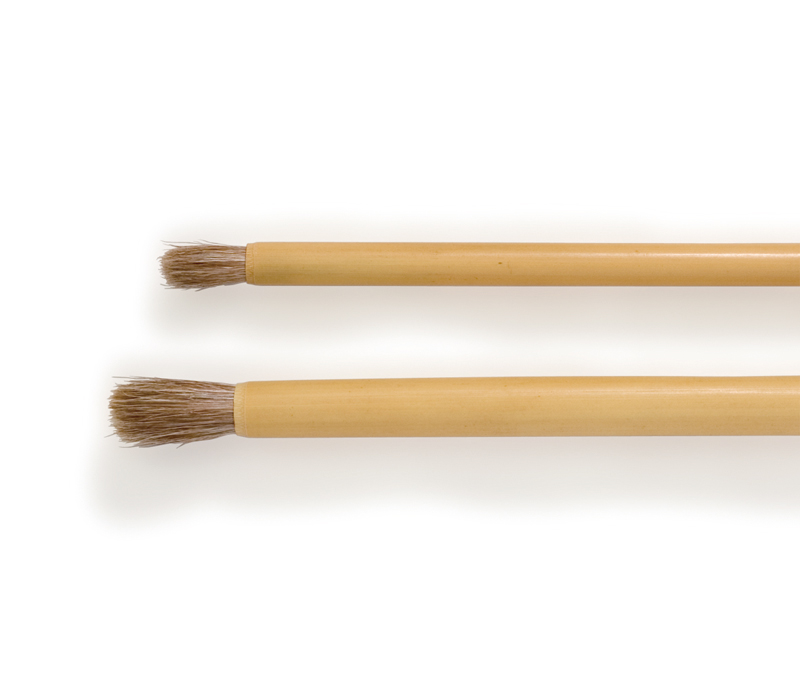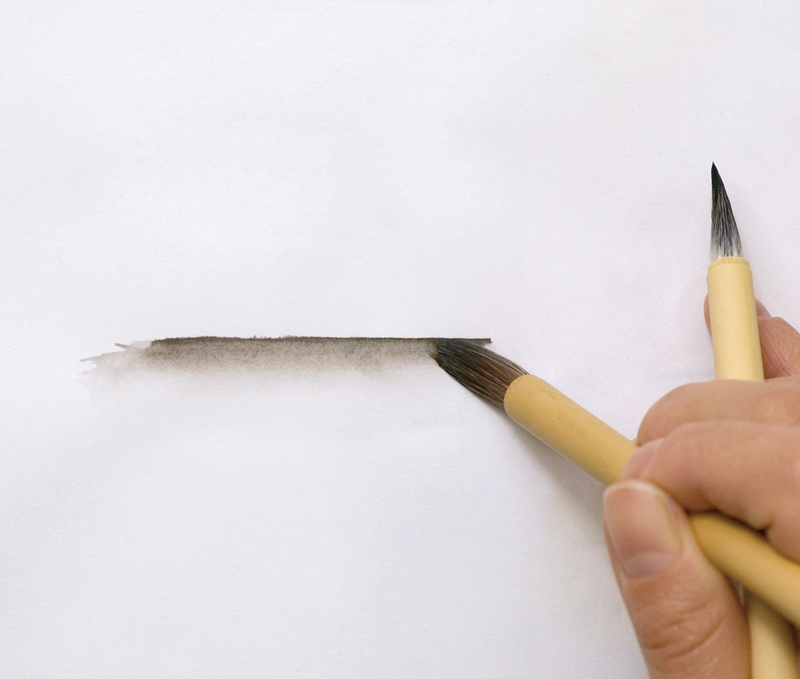Kumadori Brush
隈取筆
Kumatorifude
Artists use kumadori brushes, also known as bokashi brushes, to create bleed effects in ink or paint. Unlike other brushes, artists do not directly apply paint with a kumadori brush. Rather, they load the brush with water and apply it to still-wet paint to create bleed effects.
Kumadori brushes are made of goat hair from southern China, horse summer pelage, and deer hair (called akayamauma). Akayamauma brushes are short and very elastic. As the brush is designed to bleed paint, the head has a characteristic thick, round shape rather than a pointed tip like other brushes. Artists load the brush with water to create beautiful, streak-less bleed effects. Bleeding and contrast expression techniques in Japanese painting are called “kumadori.” There are several kumadori techniques, such as bleeding one side of a painted line (kata-bokashi), bleeding the outside lines of a painted area (sotokuma), and creating a bleed effect with a color lighter than the base (terikuma). These techniques emphasize form and spatiality and create decorative effects. A frayed coloring brush can be used as a substitute for a kumadori brush if one is not available.
Clean the brush after use by rinsing well in tap water or warm water and removing excess water. Dry the brush on a dry towel in a well-ventilated area not exposed to direct sunlight. Avoid drying the brush with the tip facing up, as water can accumulate at the base and damage the brush. Kumadori brushes are available for purchase at art supply stores that carry Japanese painting materials and general art supply stores.

 Bleeding (blurring) with a kumadori brush
Bleeding (blurring) with a kumadori brush
